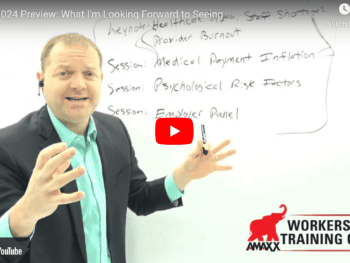New Effort to Assist Injuried Workers Back to Work
Knowing that workers are happiest when they are working and providing for their families, WorkSafe Victoria (Australia) recently unveiled a sizable new effort to assist injured workers in getting back on their feet and back to work.
According to Assistant Treasurer Gordon Rich-Phillips, the move comes in the wake of new statistics which demonstrate the longer injured workers are off work, the more likely they are to require psychiatric and psychological help.
“This campaign aims to highlight that returning to work as soon as it is safe to do so can be an important part in the injured worker’s recovery,” Rich-Phillips said. “Being off work for an extended period of time can be extremely detrimental to a worker’s health. New data shows injured workers who remain off work one year after their injury are six times more likely to access mental health treatment than injured workers who went back to work after a month.”
As Rich-Phillips pointed out, in 2012, five percent of injured workers who were off work for at least four weeks went in search of access to mental health treatment.
More Mental Health Services The Longer Away From Work
“After six months off work, 18 percent sought access to mental health services and after a year off work, 30 percent of injured workers had sought treatment for mental health.” Rich-Phillips added.
As part of WorkSafe’s effort to assist workers, a special installation at Southern Cross Station was set up to be home to an actor playing the part of an injured worker named “Pete”.
Pete was scheduled to spend five days replicating the actions injured workers can take over a six-week period to recover and prep for a return to work. Pete would be visited by the people that play a significant part in helping an injured worker back to work – his family, his doctor, his physio, his colleagues and employer.
The location of the installation, daily video links, and a strong social media campaign would spread the message of the benefits of a safe return back to the workplace.
According to WorkSafe Chief Executive Denise Cosgrove, it was not just the injured person’s own determination to get back to work that counted.
“The role played by family and friends, employer, doctor and other medical professionals is crucial in the return to work process,” Cosgrove remarked.
Cosgrove reiterated that the longer an injured worker was away from work, the smaller the chance they had of getting back into the workforce.
“That’s why helping an injured worker back to work as soon as it’s safe to do so is so important for them and their families,” Cosgrove added.
Author Michael B. Stack, CPA, Director of Operations, Amaxx Risk Solutions, Inc. is an expert in employer communication systems and part of the Amaxx team helping companies reduce their workers compensation costs by 20% to 50%. He is a writer, speaker, and website publisher. www.reduceyourworkerscomp.com. Contact: mstack@reduceyourworkerscomp.com.
©2013 Amaxx Risk Solutions, Inc. All rights reserved under International Copyright Law.











